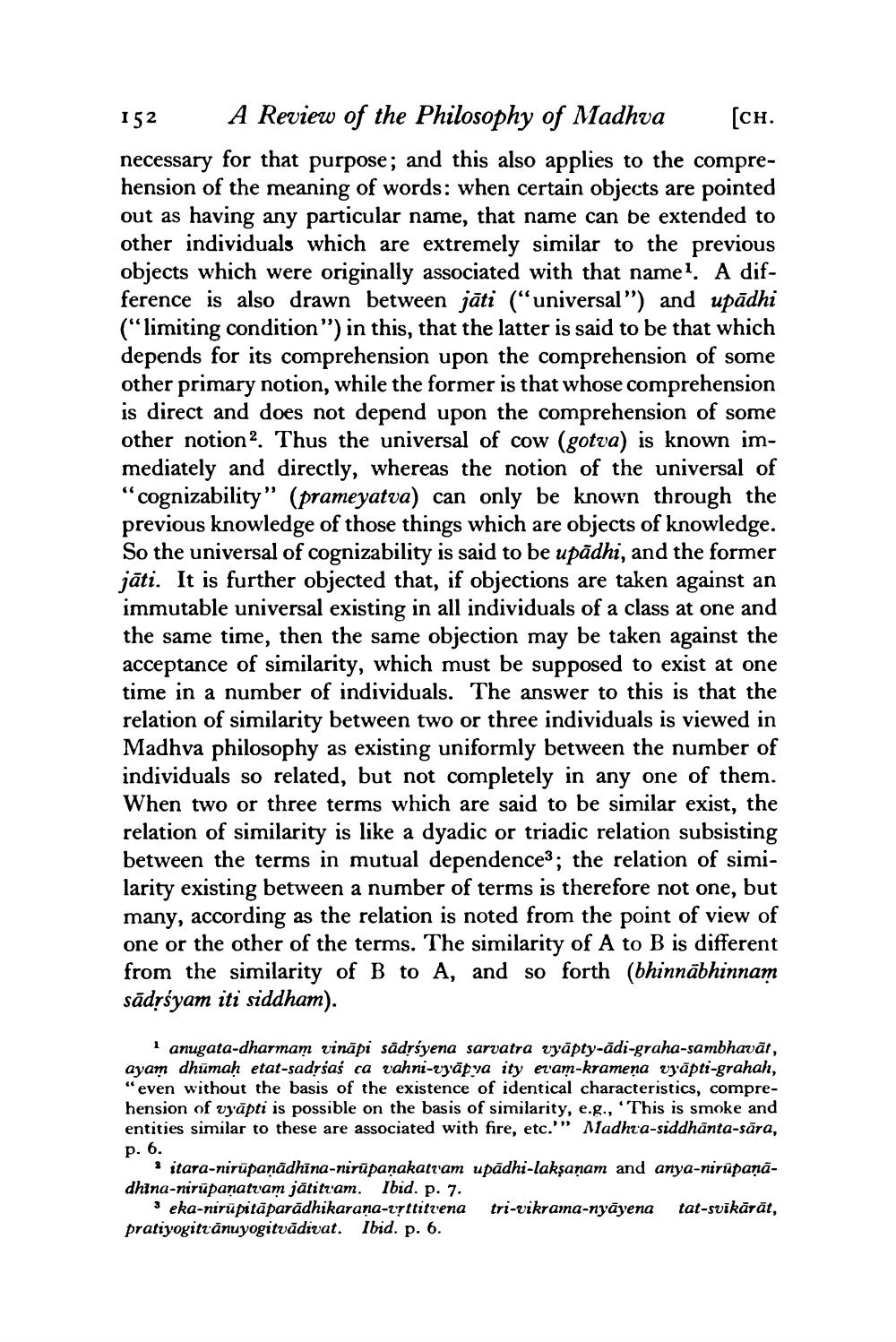________________
152 A Review of the Philosophy of Madhva [CH. necessary for that purpose; and this also applies to the comprehension of the meaning of words: when certain objects are pointed out as having any particular name, that name can be extended to other individuals which are extremely similar to the previous objects which were originally associated with that namel. A difference is also drawn between jāti ("universal") and upādhi ("limiting condition") in this, that the latter is said to be that which depends for its comprehension upon the comprehension of some other primary notion, while the former is that whose comprehension is direct and does not depend upon the comprehension of some other notion?. Thus the universal of cow (gotva) is known immediately and directly, whereas the notion of the universal of "cognizability" (prameyatva) can only be known through the previous knowledge of those things which are objects of knowledge. So the universal of cognizability is said to be upādhi, and the former jāti. It is further objected that, if objections are taken against an immutable universal existing in all individuals of a class at one and the same time, then the same objection may be taken against the acceptance of similarity, which must be supposed to exist at one time in a number of individuals. The answer to this is that the relation of similarity between two or three individuals is viewed in Madhva philosophy as existing uniformly between the number of individuals so related, but not completely in any one of them. When two or three terms which are said to be similar exist, the relation of similarity is like a dyadic or triadic relation subsisting between the terms in mutual dependence3; the relation of similarity existing between a number of terms is therefore not one, but many, according as the relation is noted from the point of view of one or the other of the terms. The similarity of A to B is different from the similarity of B to A, and so forth (bhinnābhinnam sādrśyam iti siddham).
i anugata-dharmam vināpi sadrsyena sarvatra vyāpty-ādi-graha-sambhavāt, ayam dhūmaḥ etat-sadrsas ca vahni-vyāpya ity et'am-kramena vyāpti-grahah, "even without the basis of the existence of identical characteristics, comprehension of vyāpti is possible on the basis of similarity, e.g., "This is smoke and entities similar to these are associated with fire, etc."" Nadhra-siddhānta-sára, p. 6.
'itara-nirüpanādhina-nirüpanakatram upādhi-laksanam and anya-nirüpaņādhina-nirüpanatram jātitiam. Ibid. p. 7.
Seka-nirüpitāparādhikarana-trttitvena tri-vikrama-nyāyena tat-svīkārāt, pratiyogitrānuyogitvādivat. Ibid. p. 6.




